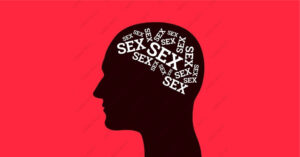In today’s digital age, the accessibility of internet pornography has led to a rise in addiction rates, affecting individuals’ mental health, relationships, and overall well-being. Pornography addiction is a serious issue that can have profound emotional and psychological effects. This blog post explores various evidence-based pornography addiction treatment strategies that can help individuals, rebuild relationships, and restore a sense of normalcy.
Contents
What Causes Pornography Addiction?
 Pornography addiction, like other behavioral addictions, arises from a complex interplay of various factors. Here are some of the primary causes:
Pornography addiction, like other behavioral addictions, arises from a complex interplay of various factors. Here are some of the primary causes:
- Neurological Factors
Viewing pornography can trigger the release of dopamine, a neurotransmitter associated with pleasure and reward pathways in the brain. Over time, repeated exposure to pornography can lead to changes in the brain similar to those observed in other addictive disorders.
- Psychological Factors
Individuals may turn to pornography as a way to cope with stress, anxiety, loneliness, or depression. It becomes a temporary escape from reality or a way to deal with negative emotions. However, this can develop into a compulsive behavior that is difficult to control.
- Social Factors
Lack of social connections, difficulties in personal relationships, or social isolation can contribute to the development of pornography addiction. Individuals might use pornography as a substitute for intimate or personal connections.
- Accessibility and Anonymity
The widespread availability of pornography on the internet and the privacy it allows significantly contribute to its addictive potential. Easy access and the ability to consume pornography anonymously lower barriers to frequent use and can facilitate the development of an addiction.
- Early Exposure
Early exposure to sexual content can also be a contributing factor. Young individuals who are exposed to pornography may develop unrealistic expectations about sex and relationships. This may encourage continued and excessive use of pornography.
- Cultural and Personal Values
In some cases, conflicts between a person’s values and their pornography use can lead to feelings of shame or guilt. This can paradoxically increase compulsive behaviors as a way to cope with these negative feelings.
Understanding these factors is crucial in addressing and treating pornography addiction effectively. Treatment often involves a combination of psychological therapies, support groups, and sometimes medication.
What Are Some Pornography Addiction Treatment?
 Pornography addiction treatment often requires a multi-faceted approach, incorporating psychological therapy, support systems, lifestyle changes, and sometimes medication.
Pornography addiction treatment often requires a multi-faceted approach, incorporating psychological therapy, support systems, lifestyle changes, and sometimes medication.
10 best approaches
Here are some effective pornography addiction treatment strategies:
Cognitive-behavioral therapy (CBT)
This is one of the most common therapies used to treat pornography addiction. CBT helps individuals recognize and change negative thoughts and behaviors associated with their addiction. It teaches coping skills to manage urges and replace unhealthy habits with positive ones.
Psychotherapy
Various forms of psychotherapy, such as psychodynamic therapy, can help address the underlying emotional and psychological issues contributing to the addiction, such as depression, anxiety, or trauma.
Group Therapy and Support Groups
Participating in group therapy or joining support groups like Sex Addicts Anonymous (SAA) can provide a network of support for others facing similar challenges. These groups offer a platform for sharing experiences and strategies for coping with addiction.
Mindfulness and Meditation
These practices can enhance self-awareness and self-regulation, helping individuals understand the triggers of their addiction and respond to them more healthily.
Education and Awareness
Understanding the effects of pornography addiction and learning about the process of addiction itself can be empowering. Education helps individuals recognize patterns of addictive behavior and the importance of seeking help.
Blocking Software and Technology Use Management
Installing filters and software to block access to pornography can help reduce exposure and temptation, especially in the initial stages of recovery.
Family or Couples Therapy
Since pornography addiction can significantly impact relationships, involving partners in therapy can help address relationship issues and improve communication.
Medication
Although there are no specific medications approved to treat pornography addiction, medications prescribed for related issues such as depression, anxiety, or OCD might help manage symptoms and behaviors related to the addiction.
Treatment is tailored to the individual’s needs, and often a combination of these approaches yields the best results. Hence, it’s essential for those struggling with addiction to seek professional help. Then, they will help to guide them through the recovery process.
What Are Natural Approaches For Pornography Addiction?
Natural approaches to address pornography addiction treatment focus on holistic and self-managed strategies that enhance overall well-being. Here are some effective natural techniques:
1. Physical Exercise
Engaging in regular physical activity can help reduce stress, improve mood, and boost self-esteem—all of which can decrease the need to seek out addictive behaviors. Activities like running, yoga, or weight training can also serve as positive distractions from urges.
2. Healthy Diet
A nutritious diet that supports brain health can improve cognitive function and emotional regulation, making it easier to manage impulses and addiction. Foods rich in omega-3 fatty acids, antioxidants, and vitamins are particularly beneficial.
3. Structured Daily Routine
Establishing a regular daily schedule can help reduce downtime and periods of idleness that might lead to pornography use. Filling the day with productive and fulfilling activities can keep the mind focused and engaged.
4. Hobby Development
Taking up new hobbies or rediscovering old ones can provide a sense of purpose and enjoyment that replaces the temporary gratification provided by addictive behaviors. Hobbies can include anything from painting and music to woodworking and gardening.
5. Mindfulness Practices
Besides meditation, other mindfulness practices such as tai chi, qigong, and deep-breathing exercises can help manage stress and maintain a calm, focused state of mind, reducing the likelihood of succumbing to addictive behaviors.
6. Journaling
Writing down thoughts, feelings, and daily experiences can help process emotions and reflect on personal growth and challenges. Journaling can be a therapeutic tool for understanding and managing addiction triggers.
7. Nature Therapy
Spending time in nature, whether it’s hiking, walking in a park, or simply sitting in a garden, can have calming effects on the mind and body, reducing stress and promoting a sense of well-being.
8. Sleep Hygiene
Ensuring sufficient and quality sleep is crucial for emotional and psychological health. Good sleep helps regulate mood, improve judgment, and restore mental clarity. All of which are vital for managing addictive behaviors.
9. Spiritual Practices
For some individuals, engaging in spiritual or religious activities can provide strength and a sense of community. Practices like prayer, meditation, or participating in religious services can offer comfort and guidance.
Thus, these natural approaches can help individuals build a more balanced and fulfilling life. Ultimately, reducing their dependency on pornography as a source of comfort or escape.
How Can I Prevent Pornography Addiction?
 Preventing pornography addiction involves cultivating a strong foundation of personal habits, awareness, and support systems. Here are effective strategies for preventing the onset or escalation of pornography addiction:
Preventing pornography addiction involves cultivating a strong foundation of personal habits, awareness, and support systems. Here are effective strategies for preventing the onset or escalation of pornography addiction:
- Education and Awareness: Understanding the potential negative impacts of excessive pornography use on mental and emotional health, relationships, and overall well-being can help individuals make more informed decisions.
- Develop Healthy Relationships: Establishing and maintaining strong, healthy relationships with family, friends, and partners can provide emotional fulfillment. Hence, reduces the likelihood of seeking out alternative sources of connection or escape.
- Set Clear Boundaries: Create and enforce personal boundaries around the use of the internet and digital devices. This might include setting specific times for using devices, keeping screens out of the bedroom, or using apps that limit the amount of time spent on certain websites.
- Use Filtering and Blocking Software: Installing software that blocks access to pornography sites can help prevent accidental exposure and reduce temptation. Especially for those who have struggled with usage in the past or are at risk.
- Manage Stress Effectively: Since stress is a common trigger for many addictive behaviors, finding healthy ways to manage stress is crucial.
- Cultivate Self-awareness: Regular self-reflection can help individuals recognize their emotional states and triggers that might lead them to seek out pornography. Awareness allows for proactive management of these feelings in healthier ways.
- Engage in Rewarding Activities: Fill your free time with engaging and fulfilling activities that provide a sense of joy and accomplishment, such to as sports, arts, learning new skills, or volunteering. These activities can offer satisfaction and a sense of purpose that pornography cannot.
- Maintain Open Communication: For families, open discussions about the effects of pornography and the importance of healthy sexuality can equip young individuals with knowledge and resilience against potential addiction.
So, using these preventive measures can help individuals maintain healthy boundaries around pornography use. Hence, reducing the risk of developing an addiction.
Conclusion
In conclusion, overcoming pornography addiction is a journey that requires understanding, support, and effective strategies. By recognizing the signs and impacts of addiction, and by exploring various treatment options from therapy to lifestyle changes, individuals can find the right support and resources they need to recover.
Hence, incorporating natural approaches and preventive measures can also play a crucial role in not just overcoming addiction but also in maintaining long-term wellness. Remember, seeking help and building a supportive network are key steps towards a healthier, more fulfilling life free from the grips of addiction.
